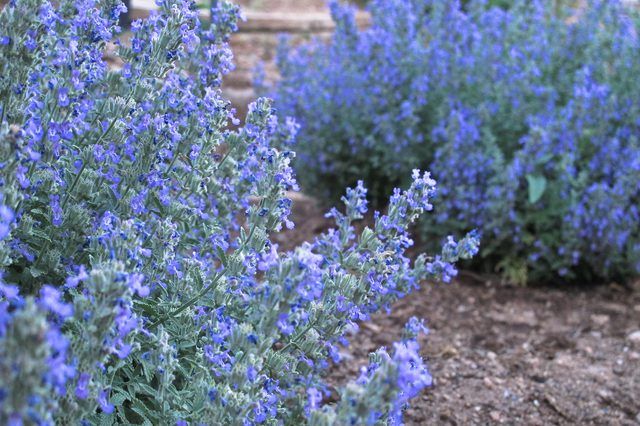Bulbs
Flower Basics
Flower Beds & Specialty Gardens
Flower Garden
Garden Furniture
Garden Gnomes
Garden Seeds
Garden Sheds
Garden Statues
Garden Tools & Supplies
Gardening Basics
Green & Organic
Groundcovers & Vines
Growing Annuals
Growing Basil
Growing Beans
Growing Berries
Growing Blueberries
Growing Cactus
Growing Corn
Growing Cotton
Growing Edibles
Growing Flowers
Growing Garlic
Growing Grapes
Growing Grass
Growing Herbs
Growing Jasmine
Growing Mint
Growing Mushrooms
Orchids
Growing Peanuts
Growing Perennials
Growing Plants
Growing Rosemary
Growing Roses
Growing Strawberries
Growing Sunflowers
Growing Thyme
Growing Tomatoes
Growing Tulips
Growing Vegetables
Herb Basics
Herb Garden
Indoor Growing
Landscaping Basics
Landscaping Patios
Landscaping Plants
Landscaping Shrubs
Landscaping Trees
Landscaping Walks & Pathways
Lawn Basics
Lawn Maintenance
Lawn Mowers
Lawn Ornaments
Lawn Planting
Lawn Tools
Outdoor Growing
Overall Landscape Planning
Pests, Weeds & Problems
Plant Basics
Rock Garden
Rose Garden
Shrubs
Soil
Specialty Gardens
Trees
Vegetable Garden
Yard Maintenance
How to Cut Back Russian Sage
How to Cut Back Russian Sage. Cutting back Russian sage (Perovskia atriplicifolia), an herbaceous perennial suited to U.S. Department of Agriculture plant hardiness zones 5 through 9, prevents it from growing tall and leggy. In full-sun sites and medium or dry, well-drained soil, Russian sage grows healthily with little care, but plants sometimes...
Cutting back Russian sage (Perovskia atriplicifolia), an herbaceous perennial suited to U.S. Department of Agriculture plant hardiness zones 5 through 9, prevents it from growing tall and leggy. In full-sun sites and medium or dry, well-drained soil, Russian sage grows healthily with little care, but plants sometimes grow too tall, and they flop over. In partial-sun sites, it often grows leggy. You can cut it back in early summer, fall and/or spring to encourage compact, dense growth that doesn't need staking. Wipe the blades of pruning tools with a cloth dipped in rubbing alcohol before and after pruning plants to help prevent the spread of pests and diseases.
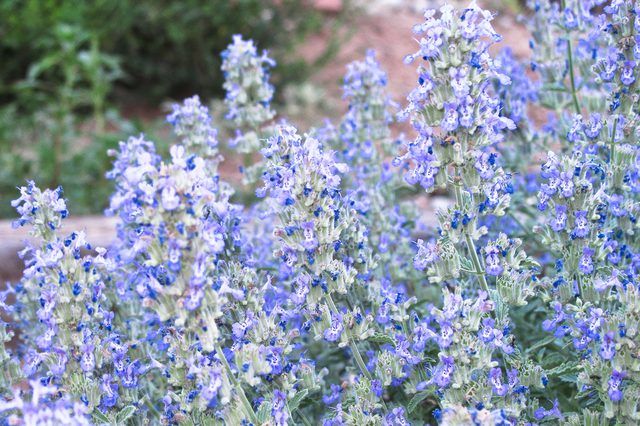
If your Russian sage plants are growing too tall, you can cut them back in early summer without losing flowers. Russian sage grows 3 to 5 feet tall and 2 to 4 feet wide. Cutting back clumps before they begin to flower might delay blooming a little but encourages dense, sturdy growth. Pinch off the top 6 inches of stems when plants are about 1 foot tall, or prune the stems with sterilized pruning shears.
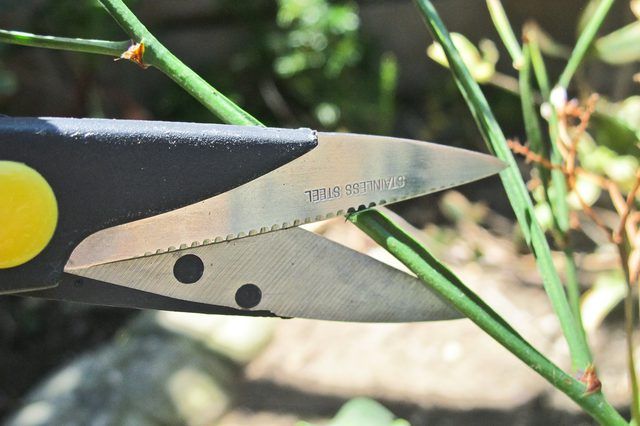
Cutting back Russian sage in fall helps prevent it from growing leggy the following year. When flowering is over in late fall, prune the stems to 1 foot tall. Prune each stem to just above a bud with sterilized pruning shears, or if you have a large patch of Russian sage, shear the plants with sterilized grass shears. Don't cut back Russian sage at the base of the stems, as this removes the following year's growth buds. You can also leave Russian sage unpruned over winter. Frost on the branched stems creates an attractive effect.
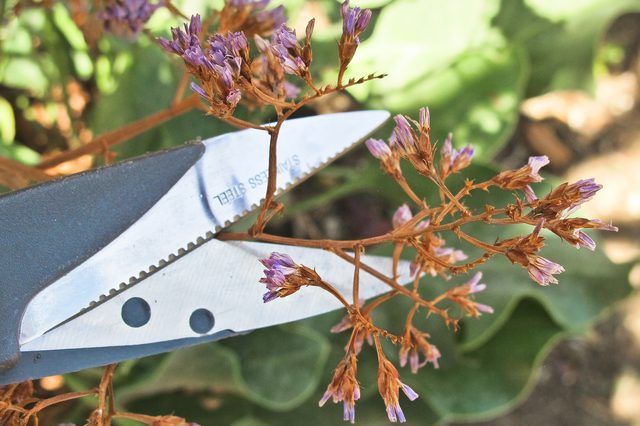
An early spring pruning removes Russian sage stems affected by winter chills. Prune before new growth appears in early spring, removing all stems to 6 inches above the ground with sterilized pruning shears. In USDA zones 5 and 6, wait until the first leaves appear before cutting plants back. Severe frosts can damage Russian sage, and when you prune you can remove the damaged stems that don't produce new growth. If no new leaves appear anywhere on the plant, wait until summer before digging it up. Even when all the top growth is killed, Russian sage often regrows from its roots.
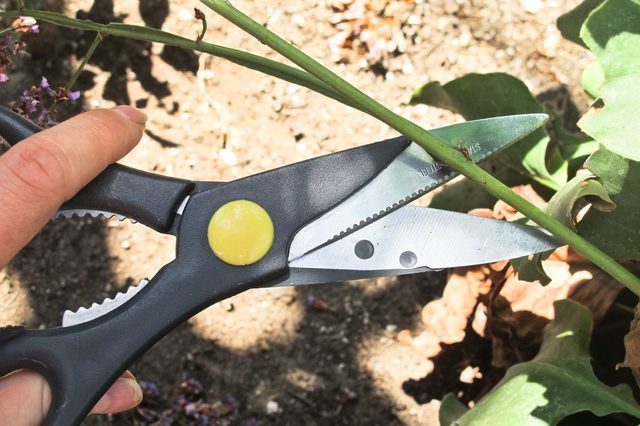
Russian sage produces long-lasting flowers for cutting, and pruning faded blooms encourages more flowers. Stiff, branched stems 12 to 15 inches tall and covered in light blue, tubular flowers appear on Russian sage midsummer through fall. To cut flowers for the house, or to remove them as they fade, prune the flowering stems with sterilized pruning shears at the base where they join the rest of the plant. You can also cut the plants back by half when the first flush of flowers fades to encourage a second flush to appear.
